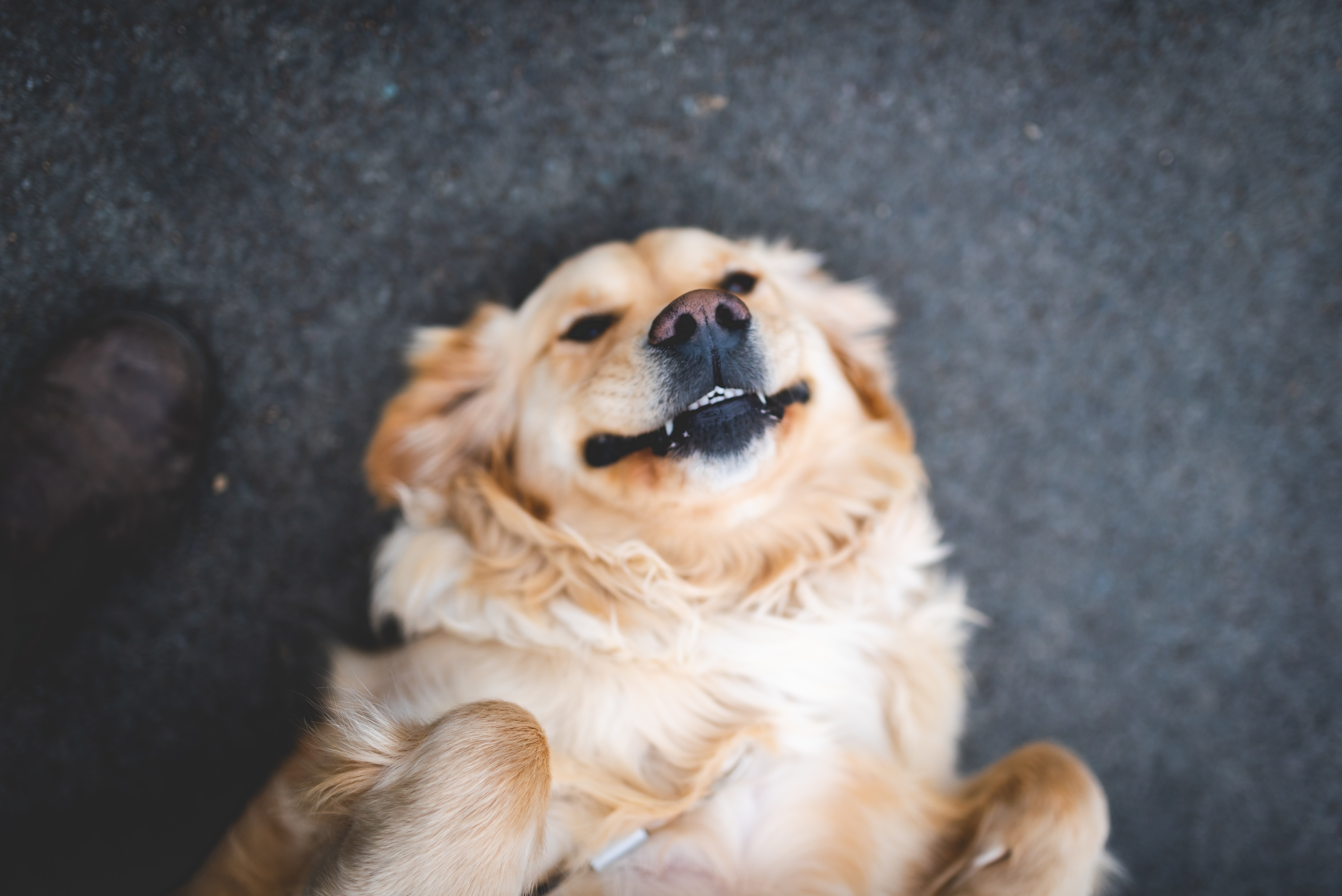Worried about using food luring during training?
by Kelly Ballantyne, DVM, DACVB
The science is pretty clear at this point that using positive reinforcement (i.e. giving an animal something s/he likes to increase the chance they’ll repeat a behavior) is the most effective and humane means of training. In most cases when we are working with dogs and cats, we use food or treats to reinforce desired behaviors. One of the main reasons behind this choice is that food is what’s called a primary reinforcer—it’s something all animals need to survive and therefore has inherent value. Food and treats are also easy to use and readily available (win, win, win!). Despite the apparent ease of using food during training, we often meet with pet parents who have concerns with using food for training or are trying but struggling to integrate food into their training plan. Here are some common concerns as well as their possible solutions.
Problem 1: You are worried your dog or cat will gain weight if you use food for training.
While this is a legitimate concern, it’s usually easy to avoid if you plan ahead. You can:
- Reduce your dog or cat’s daily meal ration to accommodate for the calories they’ll be taking in during training.
- Break your dog or cat’s treats into tiny morsels—think pea-sized. This will allow you to reinforce your pet much more frequently during a training session which will help their learning progress and help you to control calorie intake.
- Use a portion of the food you would normally put in your dog or cat’s bowl for a training session. This is especially helpful for dogs and cat’s that love their dry food and for training in situations with minimal distractions.
Problem 2: You are worried if you start training with food that you will always have to use food for training.
While my dogs are both mature adults, they are regularly reinforced with food for doing the behaviors I request of them. I taught them many of these behaviors years ago, we’ve practiced them a lot, and they respond reliably. While some might say dogs like them can be reinforced more randomly at this stage, you are actually more likely to get enthusiastic and reliable responses when you use consistent reinforcement.

Bludger (11.5 yrs) and Tonks (7.5 years)
So is always using food or treats for training really such a bad thing? It’s important to give the animals in our lives reason to perform behaviors we want them to do. This is no different than employees needing to get a steady paycheck to keep showing up their jobs week after week. If you stopped getting paid, you’d probably quickly look for a new job that gave you a better reason for being there (aka money). Similarly, if you stop “paying” your dog for doing the behaviors you want, she’ll look for other behaviors that give her better reasons for performing them, and they may be behaviors you don’t like.
To make using food during training easier, you can:
- Wear a treat pouch during training sessions or on walks. There are even stylish versions available on sites like Etsy if you’re feeling fashion conscious. Keep the treat pouch with your dog’s leash so you never forget to bring it out on a walk.
- Keep treats in closed containers and stash them strategically around the house, such as near entries and exits as well as in the main living space. This ensures food will always be readily at hand to reinforce your pet for desirable behaviors.Pro-tip: Warn any dinner guests that those containers don’t in fact hold an interesting new appetizer. I know I’m not the only one that has had a guest mistakenly eat a dog treat out of our strategically placed treat containers!
Problem 3: Your dog or cat won’t take the food offered.
This can happen for a variety of reasons, especially if you are working with your dog or cat in a potentially stressful situation.
- Try “increasing the value” of the food. The more stressful or challenging the circumstance, the higher the value of the food needs to be. A high value food is something your pet loves and is rarely offered. We usually find that cooked meats, fish, or small amounts of cheese are well received by dogs and cats. If your dog or cat gets these foods regularly in their meals or from the table, restrict their use for training sessions only.
- Increase your distance from the stressful situation or trigger. If you are using high value foods in an attempt to improve your dog or cat’s association with something that frightens him and he won’t eat, you are too close to the stimulus. Watch this excellent video from the San Francisco SPCA, increase your distance, pay attention to your timing, and try again.
If you’re interested in reading a summary of the science behind using rewards in training, check out this great blog post by Dr. Zazie Todd of Companion Animal Psychology
Not sure if your dog or cat is overweight? There are some great tools to assess dog and cat body condition. My favorite is the 9 point Body Condition System by Purina. Body condition is a more reliable metric than weight since dogs and cats can vary drastically in size. Rather than relying on numbers on a scale, the body condition system assesses physical parameters that are easy to monitor at home.
Article originally published on Dr. Ballantyne’s website insightfulanimals.com.





